我希望你能帮助我改进YOLOv12模型,一个识别水稻稻苗的模型,这个模型我是用来识别之后用来计数苗数的。现在我已经将其骨干网络换为了LSKNet结构,请你在这个基础上加入或者替换结构帮我进一步提升精度,记得后面加入的模块要适配LSKNet结构,下面是一些关于该结构的文件。
LSKNet.py
import torch
import torch.nn as nn
from torch.nn.modules.utils import _pair as to_2tuple
from timm.models.layers import DropPath, to_2tuple
from functools import partial
import warnings
__all__ = ['LSKNET_T', 'LSKNET_S']
class Mlp(nn.Module):
def __init__(self, in_features, hidden_features=None, out_features=None, act_layer=nn.GELU, drop=0.):
super().__init__()
out_features = out_features or in_features
hidden_features = hidden_features or in_features
self.fc1 = nn.Conv2d(in_features, hidden_features, 1)
self.dwconv = DWConv(hidden_features)
self.act = act_layer()
self.fc2 = nn.Conv2d(hidden_features, out_features, 1)
self.drop = nn.Dropout(drop)
def forward(self, x):
x = self.fc1(x)
x = self.dwconv(x)
x = self.act(x)
x = self.drop(x)
x = self.fc2(x)
x = self.drop(x)
return x
class LSKblock(nn.Module):
def __init__(self, dim):
super().__init__()
self.conv0 = nn.Conv2d(dim, dim, 5, padding=2, groups=dim)
self.conv_spatial = nn.Conv2d(dim, dim, 7, stride=1, padding=9, groups=dim, dilation=3)
self.conv1 = nn.Conv2d(dim, dim // 2, 1)
self.conv2 = nn.Conv2d(dim, dim // 2, 1)
self.conv_squeeze = nn.Conv2d(2, 2, 7, padding=3)
self.conv = nn.Conv2d(dim // 2, dim, 1)
def forward(self, x):
attn1 = self.conv0(x)
attn2 = self.conv_spatial(attn1)
attn1 = self.conv1(attn1)
attn2 = self.conv2(attn2)
attn = torch.cat([attn1, attn2], dim=1)
avg_attn = torch.mean(attn, dim=1, keepdim=True)
max_attn, _ = torch.max(attn, dim=1, keepdim=True)
agg = torch.cat([avg_attn, max_attn], dim=1)
sig = self.conv_squeeze(agg).sigmoid()
attn = attn1 * sig[:, 0, :, :].unsqueeze(1) + attn2 * sig[:, 1, :, :].unsqueeze(1)
attn = self.conv(attn)
return x * attn
class Attention(nn.Module):
def __init__(self, d_model):
super().__init__()
self.proj_1 = nn.Conv2d(d_model, d_model, 1)
self.activation = nn.GELU()
self.spatial_gating_unit = LSKblock(d_model)
self.proj_2 = nn.Conv2d(d_model, d_model, 1)
def forward(self, x):
shorcut = x.clone()
x = self.proj_1(x)
x = self.activation(x)
x = self.spatial_gating_unit(x)
x = self.proj_2(x)
x = x + shorcut
return x
class Block(nn.Module):
def __init__(self, dim, mlp_ratio=4., drop=0., drop_path=0., act_layer=nn.GELU, norm_cfg=None):
super().__init__()
if norm_cfg:
self.norm1 = nn.BatchNorm2d(norm_cfg, dim)
self.norm2 = nn.BatchNorm2d(norm_cfg, dim)
else:
self.norm1 = nn.BatchNorm2d(dim)
self.norm2 = nn.BatchNorm2d(dim)
self.attn = Attention(dim)
self.drop_path = DropPath(drop_path) if drop_path > 0. else nn.Identity()
mlp_hidden_dim = int(dim * mlp_ratio)
self.mlp = Mlp(in_features=dim, hidden_features=mlp_hidden_dim, act_layer=act_layer, drop=drop)
layer_scale_init_value = 1e-2
self.layer_scale_1 = nn.Parameter(
layer_scale_init_value * torch.ones((dim)), requires_grad=True)
self.layer_scale_2 = nn.Parameter(
layer_scale_init_value * torch.ones((dim)), requires_grad=True)
def forward(self, x):
x = x + self.drop_path(self.layer_scale_1.unsqueeze(-1).unsqueeze(-1) * self.attn(self.norm1(x)))
x = x + self.drop_path(self.layer_scale_2.unsqueeze(-1).unsqueeze(-1) * self.mlp(self.norm2(x)))
return x
class OverlapPatchEmbed(nn.Module):
""" Image to Patch Embedding
"""
def __init__(self, img_size=224, patch_size=7, stride=4, in_chans=3, embed_dim=768, norm_cfg=None):
super().__init__()
patch_size = to_2tuple(patch_size)
self.proj = nn.Conv2d(in_chans, embed_dim, kernel_size=patch_size, stride=stride,
padding=(patch_size[0] // 2, patch_size[1] // 2))
if norm_cfg:
self.norm = nn.BatchNorm2d(norm_cfg, embed_dim)
else:
self.norm = nn.BatchNorm2d(embed_dim)
def forward(self, x):
x = self.proj(x)
_, _, H, W = x.shape
x = self.norm(x)
return x, H, W
class LSKNet(nn.Module):
def __init__(self, img_size=224, in_chans=3, dim=None, embed_dims=[64, 128, 256, 512],
mlp_ratios=[8, 8, 4, 4], drop_rate=0., drop_path_rate=0., norm_layer=partial(nn.LayerNorm, eps=1e-6),
depths=[3, 4, 6, 3], num_stages=4,
pretrained=None,
init_cfg=None,
norm_cfg=None):
super().__init__()
assert not (init_cfg and pretrained), \
'init_cfg and pretrained cannot be set at the same time'
if isinstance(pretrained, str):
warnings.warn('DeprecationWarning: pretrained is deprecated, '
'please use "init_cfg" instead')
self.init_cfg = dict(type='Pretrained', checkpoint=pretrained)
elif pretrained is not None:
raise TypeError('pretrained must be a str or None')
self.depths = depths
self.num_stages = num_stages
dpr = [x.item() for x in torch.linspace(0, drop_path_rate, sum(depths))] # stochastic depth decay rule
cur = 0
for i in range(num_stages):
patch_embed = OverlapPatchEmbed(img_size=img_size if i == 0 else img_size // (2 ** (i + 1)),
patch_size=7 if i == 0 else 3,
stride=4 if i == 0 else 2,
in_chans=in_chans if i == 0 else embed_dims[i - 1],
embed_dim=embed_dims[i], norm_cfg=norm_cfg)
block = nn.ModuleList([Block(
dim=embed_dims[i], mlp_ratio=mlp_ratios[i], drop=drop_rate, drop_path=dpr[cur + j], norm_cfg=norm_cfg)
for j in range(depths[i])])
norm = norm_layer(embed_dims[i])
cur += depths[i]
setattr(self, f"patch_embed{i + 1}", patch_embed)
setattr(self, f"block{i + 1}", block)
setattr(self, f"norm{i + 1}", norm)
self.width_list = [i.size(1) for i in self.forward(torch.randn(1, 3, 640, 640))]
def freeze_patch_emb(self):
self.patch_embed1.requires_grad = False
@torch.jit.ignore
def no_weight_decay(self):
return {'pos_embed1', 'pos_embed2', 'pos_embed3', 'pos_embed4', 'cls_token'} # has pos_embed may be better
def get_classifier(self):
return self.head
def reset_classifier(self, num_classes, global_pool=''):
self.num_classes = num_classes
self.head = nn.Linear(self.embed_dim, num_classes) if num_classes > 0 else nn.Identity()
def forward_features(self, x):
B = x.shape[0]
outs = []
for i in range(self.num_stages):
patch_embed = getattr(self, f"patch_embed{i + 1}")
block = getattr(self, f"block{i + 1}")
norm = getattr(self, f"norm{i + 1}")
x, H, W = patch_embed(x)
for blk in block:
x = blk(x)
x = x.flatten(2).transpose(1, 2)
x = norm(x)
x = x.reshape(B, H, W, -1).permute(0, 3, 1, 2).contiguous()
outs.append(x)
return outs
def forward(self, x):
x = self.forward_features(x)
# x = self.head(x)
return x
class DWConv(nn.Module):
def __init__(self, dim=768):
super(DWConv, self).__init__()
self.dwconv = nn.Conv2d(dim, dim, 3, 1, 1, bias=True, groups=dim)
def forward(self, x):
x = self.dwconv(x)
return x
def _conv_filter(state_dict, patch_size=16):
""" convert patch embedding weight from manual patchify + linear proj to conv"""
out_dict = {}
for k, v in state_dict.items():
if 'patch_embed.proj.weight' in k:
v = v.reshape((v.shape[0], 3, patch_size, patch_size))
out_dict[k] = v
return out_dict
def LSKNET_T():
model = LSKNet(depths=[2, 2, 2, 2])
return model
def LSKNET_S():
model = LSKNet()
return model
if __name__ == '__main__':
model = LSKNet()
inputs = torch.randn((1, 3, 640, 640))
for i in model(inputs):
print(i.size())
task.py
# Ultralytics 🚀 AGPL-3.0 License - https://ultralytics.com/license
import contextlib
import pickle
import re
import types
from copy import deepcopy
from pathlib import Path
from .AddModules import *
import thop
import torch
import torch.nn as nn
from ultralytics.nn.modules import (
AIFI,
C1,
C2,
C2PSA,
C3,
C3TR,
ELAN1,
OBB,
PSA,
SPP,
SPPELAN,
SPPF,
AConv,
ADown,
Bottleneck,
BottleneckCSP,
C2f,
C2fAttn,
C2fCIB,
C2fPSA,
C3Ghost,
C3k2,
C3x,
CBFuse,
CBLinear,
Classify,
Concat,
Conv,
Conv2,
ConvTranspose,
Detect,
DWConv,
DWConvTranspose2d,
Focus,
GhostBottleneck,
GhostConv,
HGBlock,
HGStem,
ImagePoolingAttn,
Index,
Pose,
RepC3,
RepConv,
RepNCSPELAN4,
RepVGGDW,
ResNetLayer,
RTDETRDecoder,
SCDown,
Segment,
TorchVision,
WorldDetect,
v10Detect,
A2C2f,
)
from ultralytics.utils import DEFAULT_CFG_DICT, DEFAULT_CFG_KEYS, LOGGER, colorstr, emojis, yaml_load
from ultralytics.utils.checks import check_requirements, check_suffix, check_yaml
from ultralytics.utils.loss import (
E2EDetectLoss,
v8ClassificationLoss,
v8DetectionLoss,
v8OBBLoss,
v8PoseLoss,
v8SegmentationLoss,
)
from ultralytics.utils.ops import make_divisible
from ultralytics.utils.plotting import feature_visualization
from ultralytics.utils.torch_utils import (
fuse_conv_and_bn,
fuse_deconv_and_bn,
initialize_weights,
intersect_dicts,
model_info,
scale_img,
time_sync,
)
from .AddModules import *
class BaseModel(nn.Module):
"""The BaseModel class serves as a base class for all the models in the Ultralytics YOLO family."""
def forward(self, x, *args, **kwargs):
"""
Perform forward pass of the model for either training or inference.
If x is a dict, calculates and returns the loss for training. Otherwise, returns predictions for inference.
Args:
x (torch.Tensor | dict): Input tensor for inference, or dict with image tensor and labels for training.
*args (Any): Variable length argument list.
**kwargs (Any): Arbitrary keyword arguments.
Returns:
(torch.Tensor): Loss if x is a dict (training), or network predictions (inference).
"""
if isinstance(x, dict): # for cases of training and validating while training.
return self.loss(x, *args, **kwargs)
return self.predict(x, *args, **kwargs)
def predict(self, x, profile=False, visualize=False, augment=False, embed=None):
"""
Perform a forward pass through the network.
Args:
x (torch.Tensor): The input tensor to the model.
profile (bool): Print the computation time of each layer if True, defaults to False.
visualize (bool): Save the feature maps of the model if True, defaults to False.
augment (bool): Augment image during prediction, defaults to False.
embed (list, optional): A list of feature vectors/embeddings to return.
Returns:
(torch.Tensor): The last output of the model.
"""
if augment:
return self._predict_augment(x)
return self._predict_once(x, profile, visualize, embed)
def _predict_once(self, x, profile=False, visualize=False, embed=None):
y, dt, embeddings = [], [], [] # outputs
for m in self.model:
if m.f != -1: # if not from previous layer
x = y[m.f] if isinstance(m.f, int) else [x if j == -1 else y[j] for j in m.f] # from earlier layers
if profile:
self._profile_one_layer(m, x, dt)
if hasattr(m, 'backbone'):
x = m(x)
if len(x) != 5: # 0 - 5
x.insert(0, None)
for index, i in enumerate(x):
if index in self.save:
y.append(i)
else:
y.append(None)
x = x[-1] # 最后一个输出传给下一层
else:
x = m(x) # run
y.append(x if m.i in self.save else None) # save output
if visualize:
feature_visualization(x, m.type, m.i, save_dir=visualize)
if embed and m.i in embed:
embeddings.append(nn.functional.adaptive_avg_pool2d(x, (1, 1)).squeeze(-1).squeeze(-1)) # flatten
if m.i == max(embed):
return torch.unbind(torch.cat(embeddings, 1), dim=0)
return x
def _predict_augment(self, x):
"""Perform augmentations on input image x and return augmented inference."""
LOGGER.warning(
f"WARNING ⚠️ {self.__class__.__name__} does not support 'augment=True' prediction. "
f"Reverting to single-scale prediction."
)
return self._predict_once(x)
def _profile_one_layer(self, m, x, dt):
"""
Profile the computation time and FLOPs of a single layer of the model on a given input. Appends the results to
the provided list.
Args:
m (nn.Module): The layer to be profiled.
x (torch.Tensor): The input data to the layer.
dt (list): A list to store the computation time of the layer.
Returns:
None
"""
c = m == self.model[-1] and isinstance(x, list) # is final layer list, copy input as inplace fix
flops = thop.profile(m, inputs=[x.copy() if c else x], verbose=False)[0] / 1e9 * 2 if thop else 0 # GFLOPs
t = time_sync()
for _ in range(10):
m(x.copy() if c else x)
dt.append((time_sync() - t) * 100)
if m == self.model[0]:
LOGGER.info(f"{'time (ms)':>10s} {'GFLOPs':>10s} {'params':>10s} module")
LOGGER.info(f"{dt[-1]:10.2f} {flops:10.2f} {m.np:10.0f} {m.type}")
if c:
LOGGER.info(f"{sum(dt):10.2f} {'-':>10s} {'-':>10s} Total")
def fuse(self, verbose=True):
"""
Fuse the `Conv2d()` and `BatchNorm2d()` layers of the model into a single layer, in order to improve the
computation efficiency.
Returns:
(nn.Module): The fused model is returned.
"""
if not self.is_fused():
for m in self.model.modules():
if isinstance(m, (Conv, Conv2, DWConv)) and hasattr(m, "bn"):
if isinstance(m, Conv2):
m.fuse_convs()
m.conv = fuse_conv_and_bn(m.conv, m.bn) # update conv
delattr(m, "bn") # remove batchnorm
m.forward = m.forward_fuse # update forward
if isinstance(m, ConvTranspose) and hasattr(m, "bn"):
m.conv_transpose = fuse_deconv_and_bn(m.conv_transpose, m.bn)
delattr(m, "bn") # remove batchnorm
m.forward = m.forward_fuse # update forward
if isinstance(m, RepConv):
m.fuse_convs()
m.forward = m.forward_fuse # update forward
if isinstance(m, RepVGGDW):
m.fuse()
m.forward = m.forward_fuse
self.info(verbose=verbose)
return self
def is_fused(self, thresh=10):
"""
Check if the model has less than a certain threshold of BatchNorm layers.
Args:
thresh (int, optional): The threshold number of BatchNorm layers. Default is 10.
Returns:
(bool): True if the number of BatchNorm layers in the model is less than the threshold, False otherwise.
"""
bn = tuple(v for k, v in nn.__dict__.items() if "Norm" in k) # normalization layers, i.e. BatchNorm2d()
return sum(isinstance(v, bn) for v in self.modules()) < thresh # True if < 'thresh' BatchNorm layers in model
def info(self, detailed=False, verbose=True, imgsz=640):
"""
Prints model information.
Args:
detailed (bool): if True, prints out detailed information about the model. Defaults to False
verbose (bool): if True, prints out the model information. Defaults to False
imgsz (int): the size of the image that the model will be trained on. Defaults to 640
"""
return model_info(self, detailed=detailed, verbose=verbose, imgsz=imgsz)
def _apply(self, fn):
"""
Applies a function to all the tensors in the model that are not parameters or registered buffers.
Args:
fn (function): the function to apply to the model
Returns:
(BaseModel): An updated BaseModel object.
"""
self = super()._apply(fn)
m = self.model[-1] # Detect()
if isinstance(m, Detect): # includes all Detect subclasses like Segment, Pose, OBB, WorldDetect
m.stride = fn(m.stride)
m.anchors = fn(m.anchors)
m.strides = fn(m.strides)
return self
def load(self, weights, verbose=True):
"""
Load the weights into the model.
Args:
weights (dict | torch.nn.Module): The pre-trained weights to be loaded.
verbose (bool, optional): Whether to log the transfer progress. Defaults to True.
"""
model = weights["model"] if isinstance(weights, dict) else weights # torchvision models are not dicts
csd = model.float().state_dict() # checkpoint state_dict as FP32
csd = intersect_dicts(csd, self.state_dict()) # intersect
self.load_state_dict(csd, strict=False) # load
if verbose:
LOGGER.info(f"Transferred {len(csd)}/{len(self.model.state_dict())} items from pretrained weights")
def loss(self, batch, preds=None):
"""
Compute loss.
Args:
batch (dict): Batch to compute loss on
preds (torch.Tensor | List[torch.Tensor]): Predictions.
"""
if getattr(self, "criterion", None) is None:
self.criterion = self.init_criterion()
preds = self.forward(batch["img"]) if preds is None else preds
return self.criterion(preds, batch)
def init_criterion(self):
"""Initialize the loss criterion for the BaseModel."""
raise NotImplementedError("compute_loss() needs to be implemented by task heads")
class DetectionModel(BaseModel):
"""YOLOv8 detection model."""
def __init__(self, cfg="yolov8n.yaml", ch=3, nc=None, verbose=True): # model, input channels, number of classes
"""Initialize the YOLOv8 detection model with the given config and parameters."""
super().__init__()
self.yaml = cfg if isinstance(cfg, dict) else yaml_model_load(cfg) # cfg dict
if self.yaml["backbone"][0][2] == "Silence":
LOGGER.warning(
"WARNING ⚠️ YOLOv9 `Silence` module is deprecated in favor of nn.Identity. "
"Please delete local *.pt file and re-download the latest model checkpoint."
)
self.yaml["backbone"][0][2] = "nn.Identity"
# Define model
ch = self.yaml["ch"] = self.yaml.get("ch", ch) # input channels
if nc and nc != self.yaml["nc"]:
LOGGER.info(f"Overriding model.yaml nc={self.yaml['nc']} with nc={nc}")
self.yaml["nc"] = nc # override YAML value
self.model, self.save = parse_model(deepcopy(self.yaml), ch=ch, verbose=verbose) # model, savelist
self.names = {i: f"{i}" for i in range(self.yaml["nc"])} # default names dict
self.inplace = self.yaml.get("inplace", True)
self.end2end = getattr(self.model[-1], "end2end", False)
# Build strides
m = self.model[-1] # Detect()
if isinstance(m, Detect): # includes all Detect subclasses like Segment, Pose, OBB, WorldDetect
s = 256 # 2x min stride
m.inplace = self.inplace
def _forward(x):
"""Performs a forward pass through the model, handling different Detect subclass types accordingly."""
if self.end2end:
return self.forward(x)["one2many"]
return self.forward(x)[0] if isinstance(m, (Segment, Pose, OBB)) else self.forward(x)
m.stride = torch.tensor([s / x.shape[-2] for x in _forward(torch.zeros(1, ch, s, s))]) # forward
self.stride = m.stride
m.bias_init() # only run once
else:
self.stride = torch.Tensor([32]) # default stride for i.e. RTDETR
# Init weights, biases
initialize_weights(self)
if verbose:
self.info()
LOGGER.info("")
def _predict_augment(self, x):
"""Perform augmentations on input image x and return augmented inference and train outputs."""
if getattr(self, "end2end", False) or self.__class__.__name__ != "DetectionModel":
LOGGER.warning("WARNING ⚠️ Model does not support 'augment=True', reverting to single-scale prediction.")
return self._predict_once(x)
img_size = x.shape[-2:] # height, width
s = [1, 0.83, 0.67] # scales
f = [None, 3, None] # flips (2-ud, 3-lr)
y = [] # outputs
for si, fi in zip(s, f):
xi = scale_img(x.flip(fi) if fi else x, si, gs=int(self.stride.max()))
yi = super().predict(xi)[0] # forward
yi = self._descale_pred(yi, fi, si, img_size)
y.append(yi)
y = self._clip_augmented(y) # clip augmented tails
return torch.cat(y, -1), None # augmented inference, train
@staticmethod
def _descale_pred(p, flips, scale, img_size, dim=1):
"""De-scale predictions following augmented inference (inverse operation)."""
p[:, :4] /= scale # de-scale
x, y, wh, cls = p.split((1, 1, 2, p.shape[dim] - 4), dim)
if flips == 2:
y = img_size[0] - y # de-flip ud
elif flips == 3:
x = img_size[1] - x # de-flip lr
return torch.cat((x, y, wh, cls), dim)
def _clip_augmented(self, y):
"""Clip YOLO augmented inference tails."""
nl = self.model[-1].nl # number of detection layers (P3-P5)
g = sum(4**x for x in range(nl)) # grid points
e = 1 # exclude layer count
i = (y[0].shape[-1] // g) * sum(4**x for x in range(e)) # indices
y[0] = y[0][..., :-i] # large
i = (y[-1].shape[-1] // g) * sum(4 ** (nl - 1 - x) for x in range(e)) # indices
y[-1] = y[-1][..., i:] # small
return y
def init_criterion(self):
"""Initialize the loss criterion for the DetectionModel."""
return E2EDetectLoss(self) if getattr(self, "end2end", False) else v8DetectionLoss(self)
class OBBModel(DetectionModel):
"""YOLOv8 Oriented Bounding Box (OBB) model."""
def __init__(self, cfg="yolov8n-obb.yaml", ch=3, nc=None, verbose=True):
"""Initialize YOLOv8 OBB model with given config and parameters."""
super().__init__(cfg=cfg, ch=ch, nc=nc, verbose=verbose)
def init_criterion(self):
"""Initialize the loss criterion for the model."""
return v8OBBLoss(self)
class SegmentationModel(DetectionModel):
"""YOLOv8 segmentation model."""
def __init__(self, cfg="yolov8n-seg.yaml", ch=3, nc=None, verbose=True):
"""Initialize YOLOv8 segmentation model with given config and parameters."""
super().__init__(cfg=cfg, ch=ch, nc=nc, verbose=verbose)
def init_criterion(self):
"""Initialize the loss criterion for the SegmentationModel."""
return v8SegmentationLoss(self)
class PoseModel(DetectionModel):
"""YOLOv8 pose model."""
def __init__(self, cfg="yolov8n-pose.yaml", ch=3, nc=None, data_kpt_shape=(None, None), verbose=True):
"""Initialize YOLOv8 Pose model."""
if not isinstance(cfg, dict):
cfg = yaml_model_load(cfg) # load model YAML
if any(data_kpt_shape) and list(data_kpt_shape) != list(cfg["kpt_shape"]):
LOGGER.info(f"Overriding model.yaml kpt_shape={cfg['kpt_shape']} with kpt_shape={data_kpt_shape}")
cfg["kpt_shape"] = data_kpt_shape
super().__init__(cfg=cfg, ch=ch, nc=nc, verbose=verbose)
def init_criterion(self):
"""Initialize the loss criterion for the PoseModel."""
return v8PoseLoss(self)
class ClassificationModel(BaseModel):
"""YOLOv8 classification model."""
def __init__(self, cfg="yolov8n-cls.yaml", ch=3, nc=None, verbose=True):
"""Init ClassificationModel with YAML, channels, number of classes, verbose flag."""
super().__init__()
self._from_yaml(cfg, ch, nc, verbose)
def _from_yaml(self, cfg, ch, nc, verbose):
"""Set YOLOv8 model configurations and define the model architecture."""
self.yaml = cfg if isinstance(cfg, dict) else yaml_model_load(cfg) # cfg dict
# Define model
ch = self.yaml["ch"] = self.yaml.get("ch", ch) # input channels
if nc and nc != self.yaml["nc"]:
LOGGER.info(f"Overriding model.yaml nc={self.yaml['nc']} with nc={nc}")
self.yaml["nc"] = nc # override YAML value
elif not nc and not self.yaml.get("nc", None):
raise ValueError("nc not specified. Must specify nc in model.yaml or function arguments.")
self.model, self.save = parse_model(deepcopy(self.yaml), ch=ch, verbose=verbose) # model, savelist
self.stride = torch.Tensor([1]) # no stride constraints
self.names = {i: f"{i}" for i in range(self.yaml["nc"])} # default names dict
self.info()
@staticmethod
def reshape_outputs(model, nc):
"""Update a TorchVision classification model to class count 'n' if required."""
name, m = list((model.model if hasattr(model, "model") else model).named_children())[-1] # last module
if isinstance(m, Classify): # YOLO Classify() head
if m.linear.out_features != nc:
m.linear = nn.Linear(m.linear.in_features, nc)
elif isinstance(m, nn.Linear): # ResNet, EfficientNet
if m.out_features != nc:
setattr(model, name, nn.Linear(m.in_features, nc))
elif isinstance(m, nn.Sequential):
types = [type(x) for x in m]
if nn.Linear in types:
i = len(types) - 1 - types[::-1].index(nn.Linear) # last nn.Linear index
if m[i].out_features != nc:
m[i] = nn.Linear(m[i].in_features, nc)
elif nn.Conv2d in types:
i = len(types) - 1 - types[::-1].index(nn.Conv2d) # last nn.Conv2d index
if m[i].out_channels != nc:
m[i] = nn.Conv2d(m[i].in_channels, nc, m[i].kernel_size, m[i].stride, bias=m[i].bias is not None)
def init_criterion(self):
"""Initialize the loss criterion for the ClassificationModel."""
return v8ClassificationLoss()
class RTDETRDetectionModel(DetectionModel):
"""
RTDETR (Real-time DEtection and Tracking using Transformers) Detection Model class.
This class is responsible for constructing the RTDETR architecture, defining loss functions, and facilitating both
the training and inference processes. RTDETR is an object detection and tracking model that extends from the
DetectionModel base class.
Attributes:
cfg (str): The configuration file path or preset string. Default is 'rtdetr-l.yaml'.
ch (int): Number of input channels. Default is 3 (RGB).
nc (int, optional): Number of classes for object detection. Default is None.
verbose (bool): Specifies if summary statistics are shown during initialization. Default is True.
Methods:
init_criterion: Initializes the criterion used for loss calculation.
loss: Computes and returns the loss during training.
predict: Performs a forward pass through the network and returns the output.
"""
def __init__(self, cfg="rtdetr-l.yaml", ch=3, nc=None, verbose=True):
"""
Initialize the RTDETRDetectionModel.
Args:
cfg (str): Configuration file name or path.
ch (int): Number of input channels.
nc (int, optional): Number of classes. Defaults to None.
verbose (bool, optional): Print additional information during initialization. Defaults to True.
"""
super().__init__(cfg=cfg, ch=ch, nc=nc, verbose=verbose)
def init_criterion(self):
"""Initialize the loss criterion for the RTDETRDetectionModel."""
from ultralytics.models.utils.loss import RTDETRDetectionLoss
return RTDETRDetectionLoss(nc=self.nc, use_vfl=True)
def loss(self, batch, preds=None):
"""
Compute the loss for the given batch of data.
Args:
batch (dict): Dictionary containing image and label data.
preds (torch.Tensor, optional): Precomputed model predictions. Defaults to None.
Returns:
(tuple): A tuple containing the total loss and main three losses in a tensor.
"""
if not hasattr(self, "criterion"):
self.criterion = self.init_criterion()
img = batch["img"]
# NOTE: preprocess gt_bbox and gt_labels to list.
bs = len(img)
batch_idx = batch["batch_idx"]
gt_groups = [(batch_idx == i).sum().item() for i in range(bs)]
targets = {
"cls": batch["cls"].to(img.device, dtype=torch.long).view(-1),
"bboxes": batch["bboxes"].to(device=img.device),
"batch_idx": batch_idx.to(img.device, dtype=torch.long).view(-1),
"gt_groups": gt_groups,
}
preds = self.predict(img, batch=targets) if preds is None else preds
dec_bboxes, dec_scores, enc_bboxes, enc_scores, dn_meta = preds if self.training else preds[1]
if dn_meta is None:
dn_bboxes, dn_scores = None, None
else:
dn_bboxes, dec_bboxes = torch.split(dec_bboxes, dn_meta["dn_num_split"], dim=2)
dn_scores, dec_scores = torch.split(dec_scores, dn_meta["dn_num_split"], dim=2)
dec_bboxes = torch.cat([enc_bboxes.unsqueeze(0), dec_bboxes]) # (7, bs, 300, 4)
dec_scores = torch.cat([enc_scores.unsqueeze(0), dec_scores])
loss = self.criterion(
(dec_bboxes, dec_scores), targets, dn_bboxes=dn_bboxes, dn_scores=dn_scores, dn_meta=dn_meta
)
# NOTE: There are like 12 losses in RTDETR, backward with all losses but only show the main three losses.
return sum(loss.values()), torch.as_tensor(
[loss[k].detach() for k in ["loss_giou", "loss_class", "loss_bbox"]], device=img.device
)
def predict(self, x, profile=False, visualize=False, batch=None, augment=False, embed=None):
"""
Perform a forward pass through the model.
Args:
x (torch.Tensor): The input tensor.
profile (bool, optional): If True, profile the computation time for each layer. Defaults to False.
visualize (bool, optional): If True, save feature maps for visualization. Defaults to False.
batch (dict, optional): Ground truth data for evaluation. Defaults to None.
augment (bool, optional): If True, perform data augmentation during inference. Defaults to False.
embed (list, optional): A list of feature vectors/embeddings to return.
Returns:
(torch.Tensor): Model's output tensor.
"""
y, dt, embeddings = [], [], [] # outputs
for m in self.model[:-1]: # except the head part
if m.f != -1: # if not from previous layer
x = y[m.f] if isinstance(m.f, int) else [x if j == -1 else y[j] for j in m.f] # from earlier layers
if profile:
self._profile_one_layer(m, x, dt)
x = m(x) # run
y.append(x if m.i in self.save else None) # save output
if visualize:
feature_visualization(x, m.type, m.i, save_dir=visualize)
if embed and m.i in embed:
embeddings.append(nn.functional.adaptive_avg_pool2d(x, (1, 1)).squeeze(-1).squeeze(-1)) # flatten
if m.i == max(embed):
return torch.unbind(torch.cat(embeddings, 1), dim=0)
head = self.model[-1]
x = head([y[j] for j in head.f], batch) # head inference
return x
class WorldModel(DetectionModel):
"""YOLOv8 World Model."""
def __init__(self, cfg="yolov8s-world.yaml", ch=3, nc=None, verbose=True):
"""Initialize YOLOv8 world model with given config and parameters."""
self.txt_feats = torch.randn(1, nc or 80, 512) # features placeholder
self.clip_model = None # CLIP model placeholder
super().__init__(cfg=cfg, ch=ch, nc=nc, verbose=verbose)
def set_classes(self, text, batch=80, cache_clip_model=True):
"""Set classes in advance so that model could do offline-inference without clip model."""
try:
import clip
except ImportError:
check_requirements("git+https://github.com/ultralytics/CLIP.git")
import clip
if (
not getattr(self, "clip_model", None) and cache_clip_model
): # for backwards compatibility of models lacking clip_model attribute
self.clip_model = clip.load("ViT-B/32")[0]
model = self.clip_model if cache_clip_model else clip.load("ViT-B/32")[0]
device = next(model.parameters()).device
text_token = clip.tokenize(text).to(device)
txt_feats = [model.encode_text(token).detach() for token in text_token.split(batch)]
txt_feats = txt_feats[0] if len(txt_feats) == 1 else torch.cat(txt_feats, dim=0)
txt_feats = txt_feats / txt_feats.norm(p=2, dim=-1, keepdim=True)
self.txt_feats = txt_feats.reshape(-1, len(text), txt_feats.shape[-1])
self.model[-1].nc = len(text)
def predict(self, x, profile=False, visualize=False, txt_feats=None, augment=False, embed=None):
"""
Perform a forward pass through the model.
Args:
x (torch.Tensor): The input tensor.
profile (bool, optional): If True, profile the computation time for each layer. Defaults to False.
visualize (bool, optional): If True, save feature maps for visualization. Defaults to False.
txt_feats (torch.Tensor): The text features, use it if it's given. Defaults to None.
augment (bool, optional): If True, perform data augmentation during inference. Defaults to False.
embed (list, optional): A list of feature vectors/embeddings to return.
Returns:
(torch.Tensor): Model's output tensor.
"""
txt_feats = (self.txt_feats if txt_feats is None else txt_feats).to(device=x.device, dtype=x.dtype)
if len(txt_feats) != len(x):
txt_feats = txt_feats.repeat(len(x), 1, 1)
ori_txt_feats = txt_feats.clone()
y, dt, embeddings = [], [], [] # outputs
for m in self.model: # except the head part
if m.f != -1: # if not from previous layer
x = y[m.f] if isinstance(m.f, int) else [x if j == -1 else y[j] for j in m.f] # from earlier layers
if profile:
self._profile_one_layer(m, x, dt)
if isinstance(m, C2fAttn):
x = m(x, txt_feats)
elif isinstance(m, WorldDetect):
x = m(x, ori_txt_feats)
elif isinstance(m, ImagePoolingAttn):
txt_feats = m(x, txt_feats)
else:
x = m(x) # run
y.append(x if m.i in self.save else None) # save output
if visualize:
feature_visualization(x, m.type, m.i, save_dir=visualize)
if embed and m.i in embed:
embeddings.append(nn.functional.adaptive_avg_pool2d(x, (1, 1)).squeeze(-1).squeeze(-1)) # flatten
if m.i == max(embed):
return torch.unbind(torch.cat(embeddings, 1), dim=0)
return x
def loss(self, batch, preds=None):
"""
Compute loss.
Args:
batch (dict): Batch to compute loss on.
preds (torch.Tensor | List[torch.Tensor]): Predictions.
"""
if not hasattr(self, "criterion"):
self.criterion = self.init_criterion()
if preds is None:
preds = self.forward(batch["img"], txt_feats=batch["txt_feats"])
return self.criterion(preds, batch)
class Ensemble(nn.ModuleList):
"""Ensemble of models."""
def __init__(self):
"""Initialize an ensemble of models."""
super().__init__()
def forward(self, x, augment=False, profile=False, visualize=False):
"""Function generates the YOLO network's final layer."""
y = [module(x, augment, profile, visualize)[0] for module in self]
# y = torch.stack(y).max(0)[0] # max ensemble
# y = torch.stack(y).mean(0) # mean ensemble
y = torch.cat(y, 2) # nms ensemble, y shape(B, HW, C)
return y, None # inference, train output
# Functions ------------------------------------------------------------------------------------------------------------
@contextlib.contextmanager
def temporary_modules(modules=None, attributes=None):
"""
Context manager for temporarily adding or modifying modules in Python's module cache (`sys.modules`).
This function can be used to change the module paths during runtime. It's useful when refactoring code,
where you've moved a module from one location to another, but you still want to support the old import
paths for backwards compatibility.
Args:
modules (dict, optional): A dictionary mapping old module paths to new module paths.
attributes (dict, optional): A dictionary mapping old module attributes to new module attributes.
Example:
```python
with temporary_modules({"old.module": "new.module"}, {"old.module.attribute": "new.module.attribute"}):
import old.module # this will now import new.module
from old.module import attribute # this will now import new.module.attribute
```
Note:
The changes are only in effect inside the context manager and are undone once the context manager exits.
Be aware that directly manipulating `sys.modules` can lead to unpredictable results, especially in larger
applications or libraries. Use this function with caution.
"""
if modules is None:
modules = {}
if attributes is None:
attributes = {}
import sys
from importlib import import_module
try:
# Set attributes in sys.modules under their old name
for old, new in attributes.items():
old_module, old_attr = old.rsplit(".", 1)
new_module, new_attr = new.rsplit(".", 1)
setattr(import_module(old_module), old_attr, getattr(import_module(new_module), new_attr))
# Set modules in sys.modules under their old name
for old, new in modules.items():
sys.modules[old] = import_module(new)
yield
finally:
# Remove the temporary module paths
for old in modules:
if old in sys.modules:
del sys.modules[old]
class SafeClass:
"""A placeholder class to replace unknown classes during unpickling."""
def __init__(self, *args, **kwargs):
"""Initialize SafeClass instance, ignoring all arguments."""
pass
def __call__(self, *args, **kwargs):
"""Run SafeClass instance, ignoring all arguments."""
pass
class SafeUnpickler(pickle.Unpickler):
"""Custom Unpickler that replaces unknown classes with SafeClass."""
def find_class(self, module, name):
"""Attempt to find a class, returning SafeClass if not among safe modules."""
safe_modules = (
"torch",
"collections",
"collections.abc",
"builtins",
"math",
"numpy",
# Add other modules considered safe
)
if module in safe_modules:
return super().find_class(module, name)
else:
return SafeClass
def torch_safe_load(weight, safe_only=False):
"""
Attempts to load a PyTorch model with the torch.load() function. If a ModuleNotFoundError is raised, it catches the
error, logs a warning message, and attempts to install the missing module via the check_requirements() function.
After installation, the function again attempts to load the model using torch.load().
Args:
weight (str): The file path of the PyTorch model.
safe_only (bool): If True, replace unknown classes with SafeClass during loading.
Example:
```python
from ultralytics.nn.tasks import torch_safe_load
ckpt, file = torch_safe_load("path/to/best.pt", safe_only=True)
```
Returns:
ckpt (dict): The loaded model checkpoint.
file (str): The loaded filename
"""
from ultralytics.utils.downloads import attempt_download_asset
check_suffix(file=weight, suffix=".pt")
file = attempt_download_asset(weight) # search online if missing locally
try:
with temporary_modules(
modules={
"ultralytics.yolo.utils": "ultralytics.utils",
"ultralytics.yolo.v8": "ultralytics.models.yolo",
"ultralytics.yolo.data": "ultralytics.data",
},
attributes={
"ultralytics.nn.modules.block.Silence": "torch.nn.Identity", # YOLOv9e
"ultralytics.nn.tasks.YOLOv10DetectionModel": "ultralytics.nn.tasks.DetectionModel", # YOLOv10
"ultralytics.utils.loss.v10DetectLoss": "ultralytics.utils.loss.E2EDetectLoss", # YOLOv10
},
):
if safe_only:
# Load via custom pickle module
safe_pickle = types.ModuleType("safe_pickle")
safe_pickle.Unpickler = SafeUnpickler
safe_pickle.load = lambda file_obj: SafeUnpickler(file_obj).load()
with open(file, "rb") as f:
ckpt = torch.load(f, pickle_module=safe_pickle)
else:
ckpt = torch.load(file, map_location="cpu")
except ModuleNotFoundError as e: # e.name is missing module name
if e.name == "models":
raise TypeError(
emojis(
f"ERROR ❌️ {weight} appears to be an Ultralytics YOLOv5 model originally trained "
f"with https://github.com/ultralytics/yolov5.\nThis model is NOT forwards compatible with "
f"YOLOv8 at https://github.com/ultralytics/ultralytics."
f"\nRecommend fixes are to train a new model using the latest 'ultralytics' package or to "
f"run a command with an official Ultralytics model, i.e. 'yolo predict model=yolov8n.pt'"
)
) from e
LOGGER.warning(
f"WARNING ⚠️ {weight} appears to require '{e.name}', which is not in Ultralytics requirements."
f"\nAutoInstall will run now for '{e.name}' but this feature will be removed in the future."
f"\nRecommend fixes are to train a new model using the latest 'ultralytics' package or to "
f"run a command with an official Ultralytics model, i.e. 'yolo predict model=yolov8n.pt'"
)
check_requirements(e.name) # install missing module
ckpt = torch.load(file, map_location="cpu")
if not isinstance(ckpt, dict):
# File is likely a YOLO instance saved with i.e. torch.save(model, "saved_model.pt")
LOGGER.warning(
f"WARNING ⚠️ The file '{weight}' appears to be improperly saved or formatted. "
f"For optimal results, use model.save('filename.pt') to correctly save YOLO models."
)
ckpt = {"model": ckpt.model}
return ckpt, file
def attempt_load_weights(weights, device=None, inplace=True, fuse=False):
"""Loads an ensemble of models weights=[a,b,c] or a single model weights=[a] or weights=a."""
ensemble = Ensemble()
for w in weights if isinstance(weights, list) else [weights]:
ckpt, w = torch_safe_load(w) # load ckpt
args = {**DEFAULT_CFG_DICT, **ckpt["train_args"]} if "train_args" in ckpt else None # combined args
model = (ckpt.get("ema") or ckpt["model"]).to(device).float() # FP32 model
# Model compatibility updates
model.args = args # attach args to model
model.pt_path = w # attach *.pt file path to model
model.task = guess_model_task(model)
if not hasattr(model, "stride"):
model.stride = torch.tensor([32.0])
# Append
ensemble.append(model.fuse().eval() if fuse and hasattr(model, "fuse") else model.eval()) # model in eval mode
# Module updates
for m in ensemble.modules():
if hasattr(m, "inplace"):
m.inplace = inplace
elif isinstance(m, nn.Upsample) and not hasattr(m, "recompute_scale_factor"):
m.recompute_scale_factor = None # torch 1.11.0 compatibility
# Return model
if len(ensemble) == 1:
return ensemble[-1]
# Return ensemble
LOGGER.info(f"Ensemble created with {weights}\n")
for k in "names", "nc", "yaml":
setattr(ensemble, k, getattr(ensemble[0], k))
ensemble.stride = ensemble[int(torch.argmax(torch.tensor([m.stride.max() for m in ensemble])))].stride
assert all(ensemble[0].nc == m.nc for m in ensemble), f"Models differ in class counts {[m.nc for m in ensemble]}"
return ensemble
def attempt_load_one_weight(weight, device=None, inplace=True, fuse=False):
"""Loads a single model weights."""
ckpt, weight = torch_safe_load(weight) # load ckpt
args = {**DEFAULT_CFG_DICT, **(ckpt.get("train_args", {}))} # combine model and default args, preferring model args
model = (ckpt.get("ema") or ckpt["model"]).to(device).float() # FP32 model
# Model compatibility updates
model.args = {k: v for k, v in args.items() if k in DEFAULT_CFG_KEYS} # attach args to model
model.pt_path = weight # attach *.pt file path to model
model.task = guess_model_task(model)
if not hasattr(model, "stride"):
model.stride = torch.tensor([32.0])
model = model.fuse().eval() if fuse and hasattr(model, "fuse") else model.eval() # model in eval mode
# Module updates
for m in model.modules():
if hasattr(m, "inplace"):
m.inplace = inplace
elif isinstance(m, nn.Upsample) and not hasattr(m, "recompute_scale_factor"):
m.recompute_scale_factor = None # torch 1.11.0 compatibility
# Return model and ckpt
return model, ckpt
def parse_model(d, ch, verbose=True): # model_dict, input_channels(3)
"""Parse a YOLO model.yaml dictionary into a PyTorch model."""
import ast
# Args
legacy = True # backward compatibility for v3/v5/v8/v9 models
max_channels = float("inf")
nc, act, scales = (d.get(x) for x in ("nc", "activation", "scales"))
depth, width, kpt_shape = (d.get(x, 1.0) for x in ("depth_multiple", "width_multiple", "kpt_shape"))
if scales:
scale = d.get("scale")
if not scale:
scale = tuple(scales.keys())[0]
LOGGER.warning(f"WARNING ⚠️ no model scale passed. Assuming scale='{scale}'.")
depth, width, max_channels = scales[scale]
if act:
Conv.default_act = eval(act) # redefine default activation, i.e. Conv.default_act = nn.SiLU()
if verbose:
LOGGER.info(f"{colorstr('activation:')} {act}") # print
if verbose:
LOGGER.info(f"\n{'':>3}{'from':>20}{'n':>3}{'params':>10} {'module':<45}{'arguments':<30}")
ch = [ch]
layers, save, c2 = [], [], ch[-1] # layers, savelist, ch out
backbone = False
for i, (f, n, m, args) in enumerate(d["backbone"] + d["head"]): # from, number, module, args
t=m
m = getattr(torch.nn, m[3:]) if "nn." in m else globals()[m] # get module
for j, a in enumerate(args):
if isinstance(a, str):
with contextlib.suppress(ValueError):
args[j] = locals()[a] if a in locals() else ast.literal_eval(a)
n = n_ = max(round(n * depth), 1) if n > 1 else n # depth gain
if m in {
Classify,
Conv,
ConvTranspose,
GhostConv,
Bottleneck,
GhostBottleneck,
SPP,
SPPF,
C2fPSA,
C2PSA,
DWConv,
Focus,
BottleneckCSP,
C1,
C2,
C2f,
C3k2,
RepNCSPELAN4,
ELAN1,
ADown,
AConv,
SPPELAN,
C2fAttn,
C3,
C3TR,
C3Ghost,
nn.ConvTranspose2d,
DWConvTranspose2d,
C3x,
RepC3,
PSA,
SCDown,
C2fCIB,
A2C2f,
}:
c1, c2 = ch[f], args[0]
if c2 != nc: # if c2 not equal to number of classes (i.e. for Classify() output)
c2 = make_divisible(min(c2, max_channels) * width, 8)
if m is C2fAttn:
args[1] = make_divisible(min(args[1], max_channels // 2) * width, 8) # embed channels
args[2] = int(
max(round(min(args[2], max_channels // 2 // 32)) * width, 1) if args[2] > 1 else args[2]
) # num heads
args = [c1, c2, *args[1:]]
if m in {
BottleneckCSP,
C1,
C2,
C2f,
C3k2,
C2fAttn,
C3,
C3TR,
C3Ghost,
C3x,
RepC3,
C2fPSA,
C2fCIB,
C2PSA,
A2C2f,
}:
args.insert(2, n) # number of repeats
n = 1
if m is C3k2: # for M/L/X sizes
legacy = False
if scale in "mlx":
args[3] = True
if m is A2C2f:
legacy = False
if scale in "lx": # for L/X sizes
args.append(True)
args.append(1.2)
elif m is AIFI:
args = [ch[f], *args]
elif m in {HGStem, HGBlock}:
c1, cm, c2 = ch[f], args[0], args[1]
args = [c1, cm, c2, *args[2:]]
if m is HGBlock:
args.insert(4, n) # number of repeats
n = 1
elif m is ResNetLayer:
c2 = args[1] if args[3] else args[1] * 4
elif m is nn.BatchNorm2d:
args = [ch[f]]
#LSKNet
elif m in {LSKNET_T,LSKNET_S}:
m = m(*args)
c2 = m.width_list
backbone =True
elif m is Concat:
c2 = sum(ch[x] for x in f)
elif m in {Detect, WorldDetect, Segment, Pose, OBB, ImagePoolingAttn, v10Detect}:
args.append([ch[x] for x in f])
if m is Segment:
args[2] = make_divisible(min(args[2], max_channels) * width, 8)
if m in {Detect, Segment, Pose, OBB}:
m.legacy = legacy
elif m is RTDETRDecoder: # special case, channels arg must be passed in index 1
args.insert(1, [ch[x] for x in f])
elif m in {CBLinear, TorchVision, Index}:
c2 = args[0]
c1 = ch[f]
args = [c1, c2, *args[1:]]
elif m is CBFuse:
c2 = ch[f[-1]]
else:
c2 = ch[f]
# m_ = nn.Sequential(*(m(*args) for _ in range(n))) if n > 1 else m(*args) # module
# t = str(m)[8:-2].replace("__main__.", "") # module type
# m_.np = sum(x.numel() for x in m_.parameters()) # number params
# m_.i, m_.f, m_.type = i, f, t # attach index, 'from' index, type
# if verbose:
# LOGGER.info(f"{i:>3}{str(f):>20}{n_:>3}{m_.np:10.0f} {t:<45}{str(args):<30}") # print
# save.extend(x % i for x in ([f] if isinstance(f, int) else f) if x != -1) # append to savelist
# layers.append(m_)
# if i == 0:
# ch = []
# ch.append(c2)
if isinstance(c2, list):
backbone = True
m_ = m
m_.backbone = True
else:
m_ = nn.Sequential(*(m(*args) for _ in range(n))) if n > 1 else m(*args) # module
t = str(m)[8:-2].replace('__main__.', '') # module type
m.np = sum(x.numel() for x in m_.parameters()) # number params
m_.i, m_.f, m_.type = i + 4 if backbone else i, f, t # attach index, 'from' index, type
if verbose:
LOGGER.info(f'{i:>3}{str(f):>20}{n_:>3}{m.np:10.0f} {t:<45}{str(args):<30}') # print
save.extend(x % (i + 4 if backbone else i) for x in ([f] if isinstance(f, int) else f) if
x != -1) # append to savelist
layers.append(m_)
if i == 0:
ch = []
if isinstance(c2, list):
ch.extend(c2)
for _ in range(5 - len(ch)):
ch.insert(0, 0)
else:
ch.append(c2)
return nn.Sequential(*layers), sorted(save)
def yaml_model_load(path):
"""Load a YOLOv8 model from a YAML file."""
path = Path(path)
if path.stem in (f"yolov{d}{x}6" for x in "nsmlx" for d in (5, 8)):
new_stem = re.sub(r"(\d+)([nslmx])6(.+)?$", r"\1\2-p6\3", path.stem)
LOGGER.warning(f"WARNING ⚠️ Ultralytics YOLO P6 models now use -p6 suffix. Renaming {path.stem} to {new_stem}.")
path = path.with_name(new_stem + path.suffix)
unified_path = re.sub(r"(\d+)([nslmx])(.+)?$", r"\1\3", str(path)) # i.e. yolov8x.yaml -> yolov8.yaml
yaml_file = check_yaml(unified_path, hard=False) or check_yaml(path)
d = yaml_load(yaml_file) # model dict
d["scale"] = guess_model_scale(path)
d["yaml_file"] = str(path)
return d
def guess_model_scale(model_path):
"""
Takes a path to a YOLO model's YAML file as input and extracts the size character of the model's scale. The function
uses regular expression matching to find the pattern of the model scale in the YAML file name, which is denoted by
n, s, m, l, or x. The function returns the size character of the model scale as a string.
Args:
model_path (str | Path): The path to the YOLO model's YAML file.
Returns:
(str): The size character of the model's scale, which can be n, s, m, l, or x.
"""
try:
return re.search(r"yolo[v]?\d+([nslmx])", Path(model_path).stem).group(1) # noqa, returns n, s, m, l, or x
except AttributeError:
return ""
def guess_model_task(model):
"""
Guess the task of a PyTorch model from its architecture or configuration.
Args:
model (nn.Module | dict): PyTorch model or model configuration in YAML format.
Returns:
(str): Task of the model ('detect', 'segment', 'classify', 'pose').
Raises:
SyntaxError: If the task of the model could not be determined.
"""
def cfg2task(cfg):
"""Guess from YAML dictionary."""
m = cfg["head"][-1][-2].lower() # output module name
if m in {"classify", "classifier", "cls", "fc"}:
return "classify"
if "detect" in m:
return "detect"
if m == "segment":
return "segment"
if m == "pose":
return "pose"
if m == "obb":
return "obb"
# Guess from model cfg
if isinstance(model, dict):
with contextlib.suppress(Exception):
return cfg2task(model)
# Guess from PyTorch model
if isinstance(model, nn.Module): # PyTorch model
for x in "model.args", "model.model.args", "model.model.model.args":
with contextlib.suppress(Exception):
return eval(x)["task"]
for x in "model.yaml", "model.model.yaml", "model.model.model.yaml":
with contextlib.suppress(Exception):
return cfg2task(eval(x))
for m in model.modules():
if isinstance(m, Segment):
return "segment"
elif isinstance(m, Classify):
return "classify"
elif isinstance(m, Pose):
return "pose"
elif isinstance(m, OBB):
return "obb"
elif isinstance(m, (Detect, WorldDetect, v10Detect)):
return "detect"
# Guess from model filename
if isinstance(model, (str, Path)):
model = Path(model)
if "-seg" in model.stem or "segment" in model.parts:
return "segment"
elif "-cls" in model.stem or "classify" in model.parts:
return "classify"
elif "-pose" in model.stem or "pose" in model.parts:
return "pose"
elif "-obb" in model.stem or "obb" in model.parts:
return "obb"
elif "detect" in model.parts:
return "detect"
# Unable to determine task from model
LOGGER.warning(
"WARNING ⚠️ Unable to automatically guess model task, assuming 'task=detect'. "
"Explicitly define task for your model, i.e. 'task=detect', 'segment', 'classify','pose' or 'obb'."
)
return "detect" # assume detect
__init__.py
from .LSKNet import *
yolov12-LSKNet.yaml
# YOLOv12 🚀, AGPL-3.0 license
# YOLOv12 object detection model with P3-P5 outputs. For Usage examples see https://docs.ultralytics.com/tasks/detect
# Parameters
nc: 1 # number of classes
scales: # model compound scaling constants, i.e. 'model=yolov12n.yaml' will call yolov12.yaml with scale 'n'
# [depth, width, max_channels]
n: [0.50, 0.25, 1024] # summary: 465 layers, 2,603,056 parameters, 2,603,040 gradients, 6.7 GFLOPs
s: [0.50, 0.50, 1024] # summary: 465 layers, 9,285,632 parameters, 9,285,616 gradients, 21.7 GFLOPs
m: [0.50, 1.00, 512] # summary: 501 layers, 20,201,216 parameters, 20,201,200 gradients, 68.1 GFLOPs
l: [1.00, 1.00, 512] # summary: 831 layers, 26,454,880 parameters, 26,454,864 gradients, 89.7 GFLOPs
x: [1.00, 1.50, 512] # summary: 831 layers, 59,216,928 parameters, 59,216,912 gradients, 200.3 GFLOPs
# YOLO12n backbone
backbone:
# [from, repeats, module, args]
- [-1, 1, LSKNET_T, []]
# YOLO12n head
head:
- [-1, 1, nn.Upsample, [None, 2, "nearest"]]
- [[-1, 3], 1, Concat, [1]] # cat backbone P4
- [-1, 2, A2C2f, [512, False, -1]] # 8
- [-1, 1, nn.Upsample, [None, 2, "nearest"]]
- [[-1, 2], 1, Concat, [1]] # cat backbone P3
- [-1, 2, A2C2f, [256, False, -1]] # 11
- [-1, 1, Conv, [256, 3, 2]]
- [[-1, 7], 1, Concat, [1]] # cat head P4
- [-1, 2, A2C2f, [512, False, -1]] # 14
- [-1, 1, Conv, [512, 3, 2]]
- [[-1, 4], 1, Concat, [1]] # cat head P5
- [-1, 2, C3k2, [1024, True]] # 17 (P5/32-large)
- [[10, 13, 16], 1, Detect, [nc]] # Detect(P3, P4, P5)
下面是我训练时所使用到的代码
train.py
from ultralytics import YOLO
def main():
model = YOLO("yolov12-LSKNet.yaml")
results = model.train(
data='./data.yaml',
epochs=200,
imgsz=640,
batch=16,
amp=False,
device=0,
save=True,
project='runs/train',
name='rice_seedling-200L+NWD',
verbose=True,
workers=2,
cache=True,
)
if __name__ == '__main__':
from multiprocessing import freeze_support
freeze_support()
main()


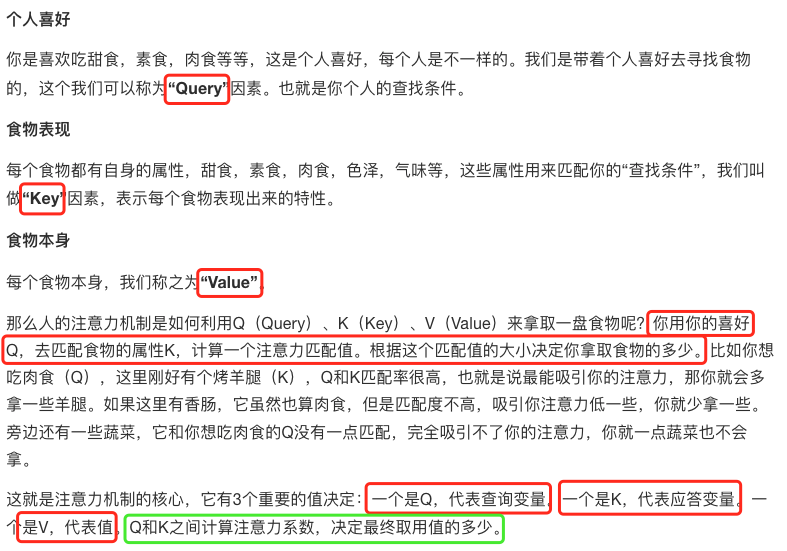
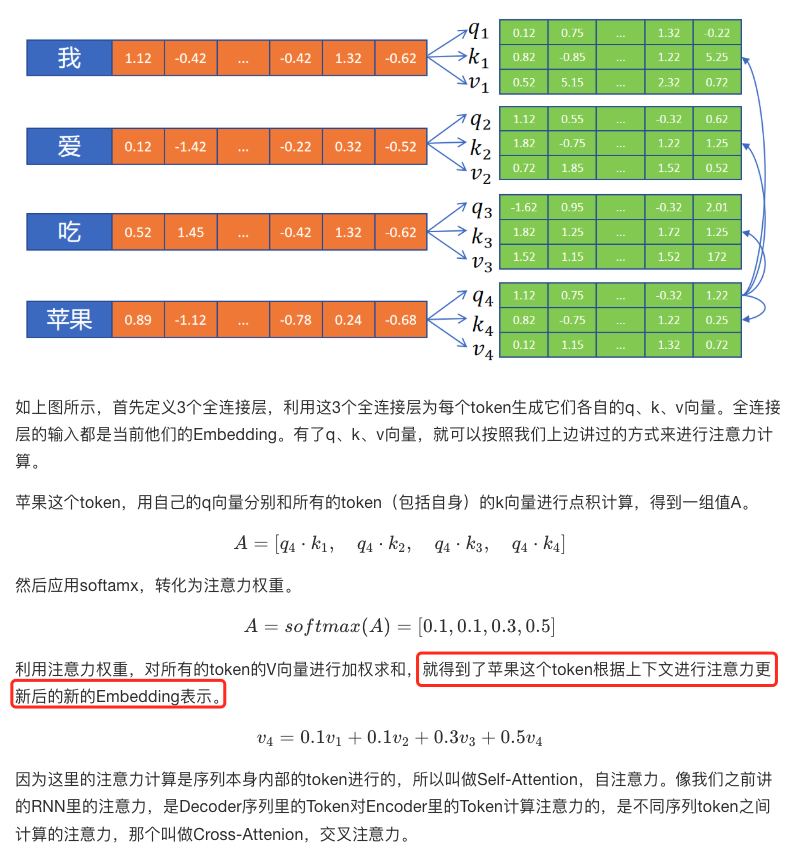

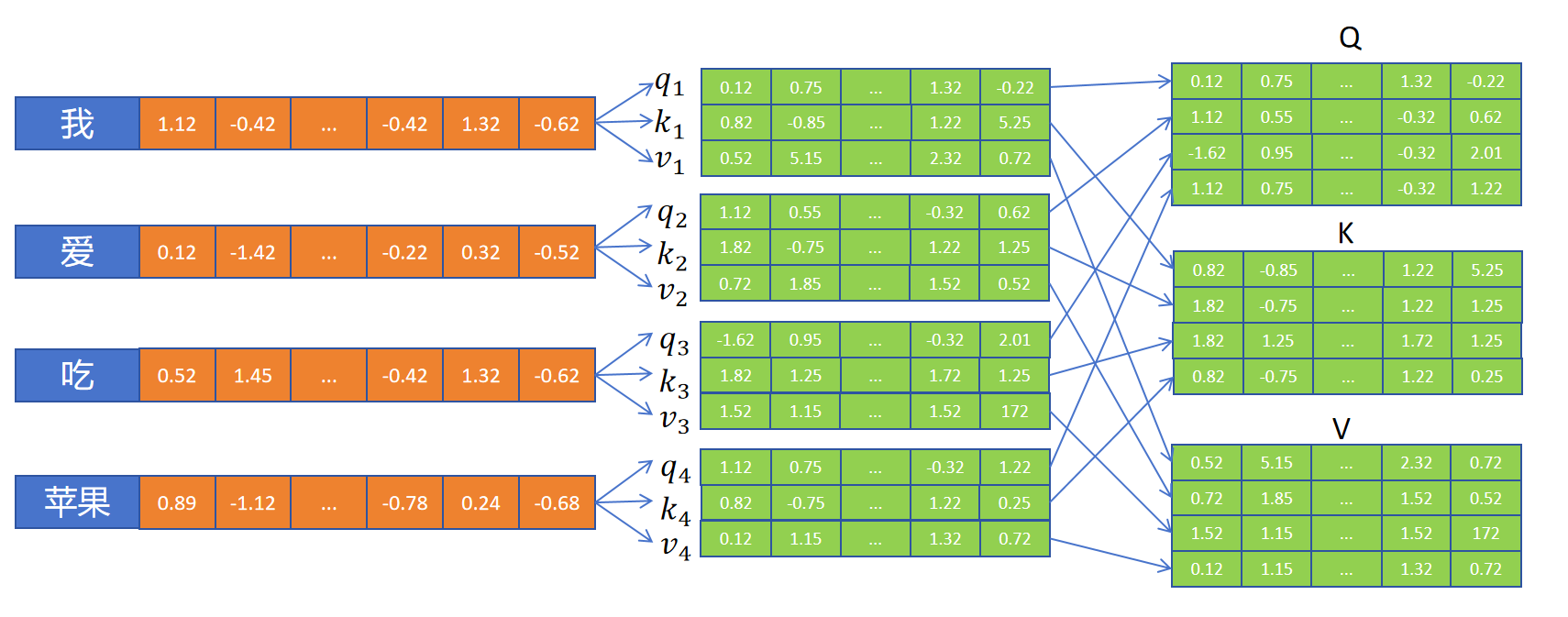

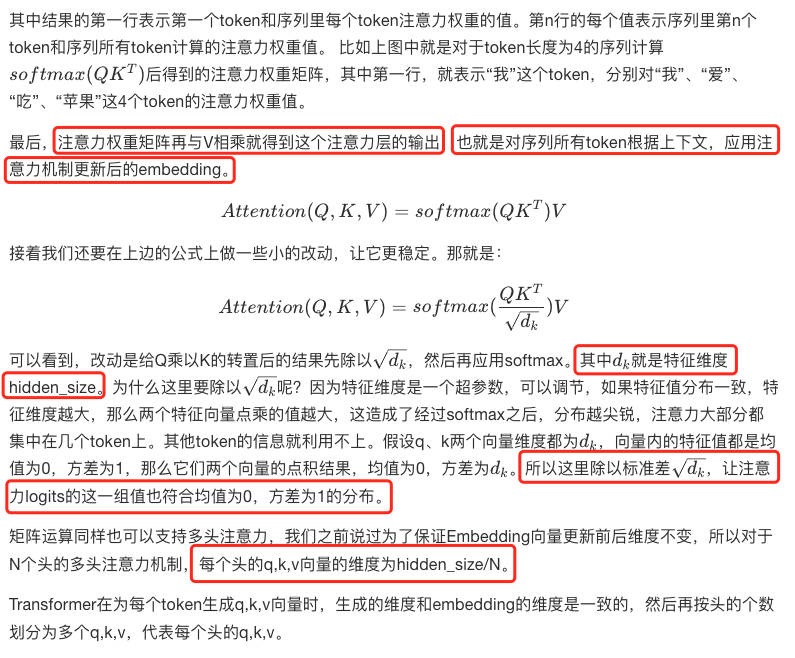
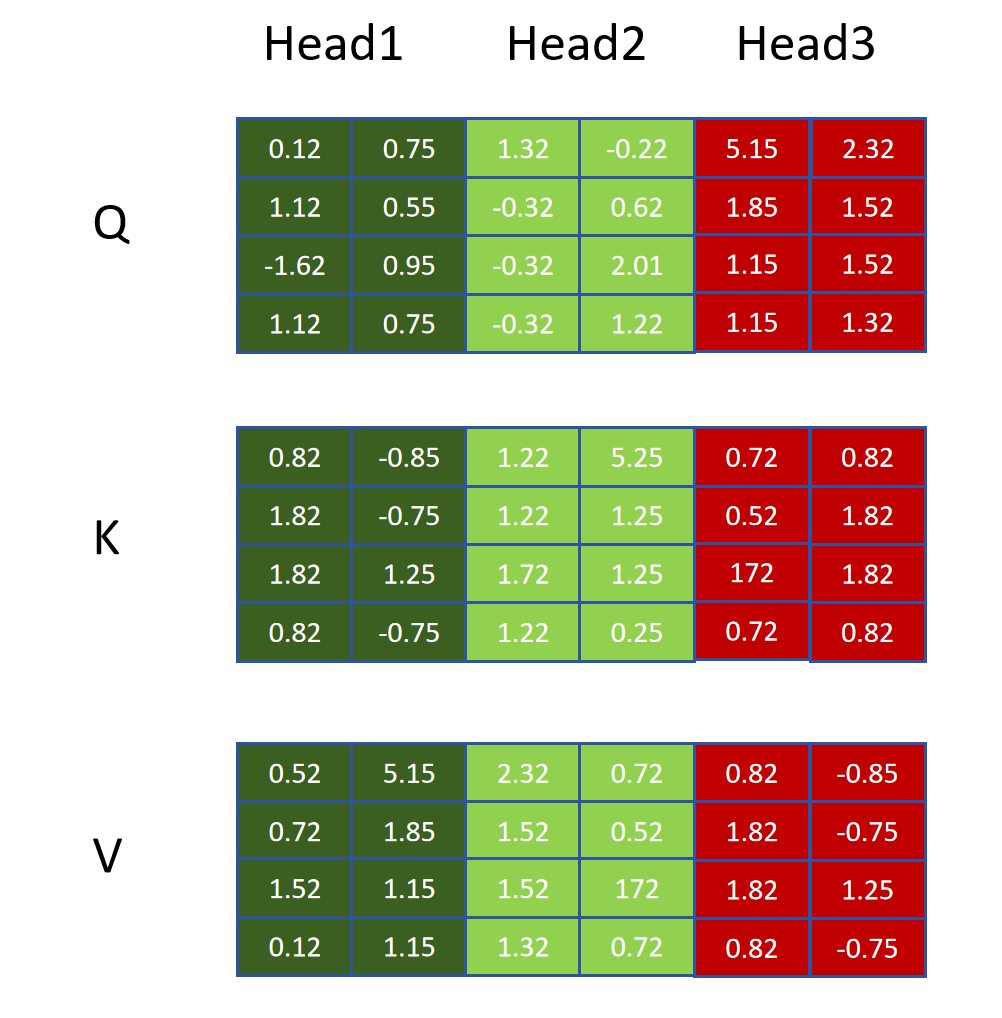





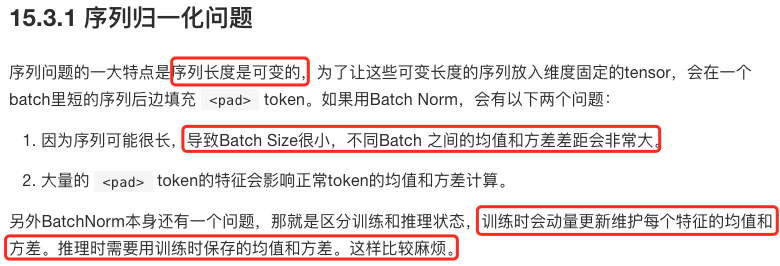
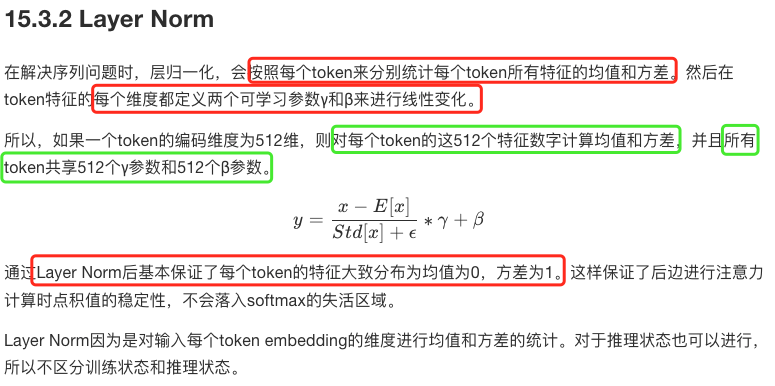


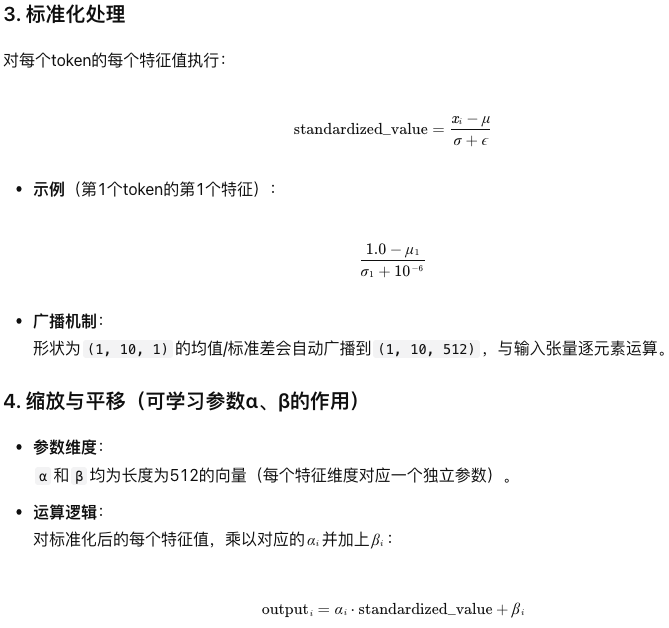
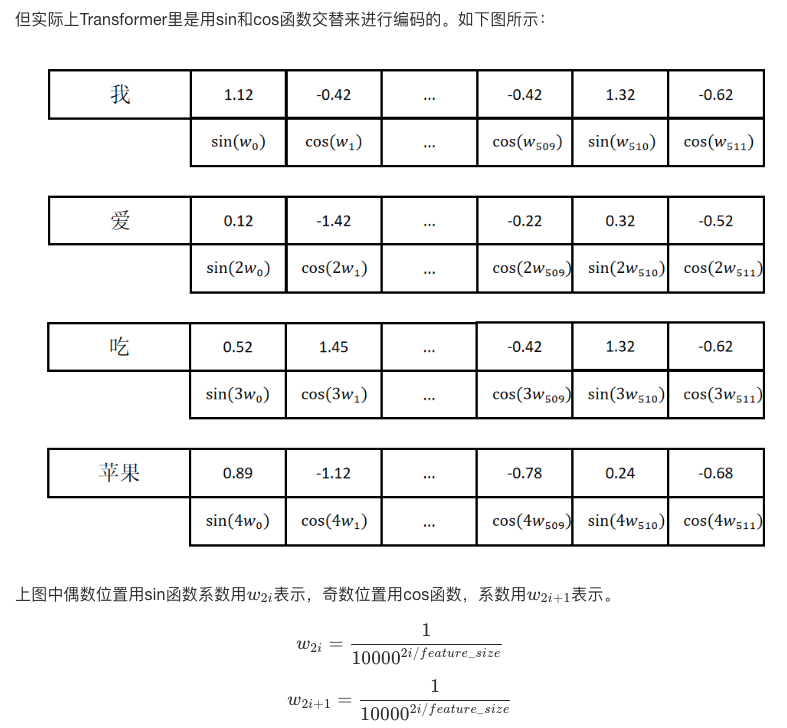






















 814
814

 被折叠的 条评论
为什么被折叠?
被折叠的 条评论
为什么被折叠?








